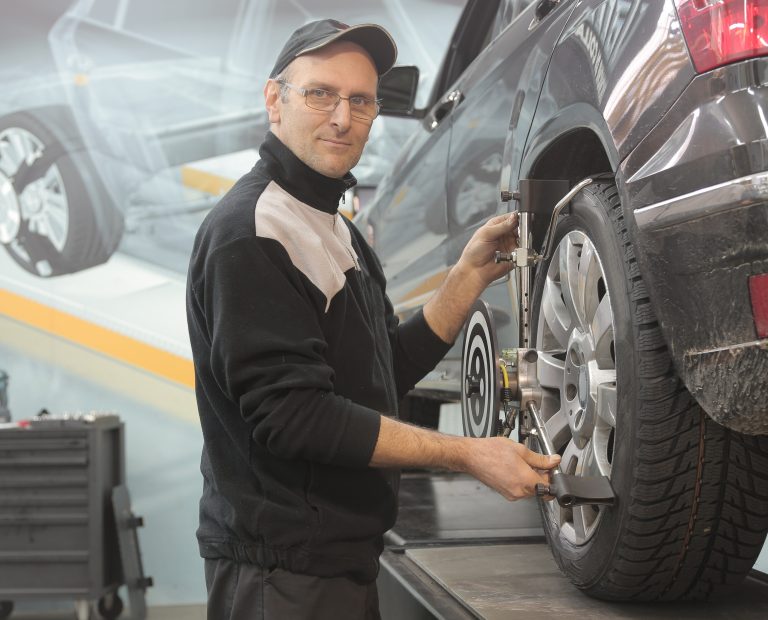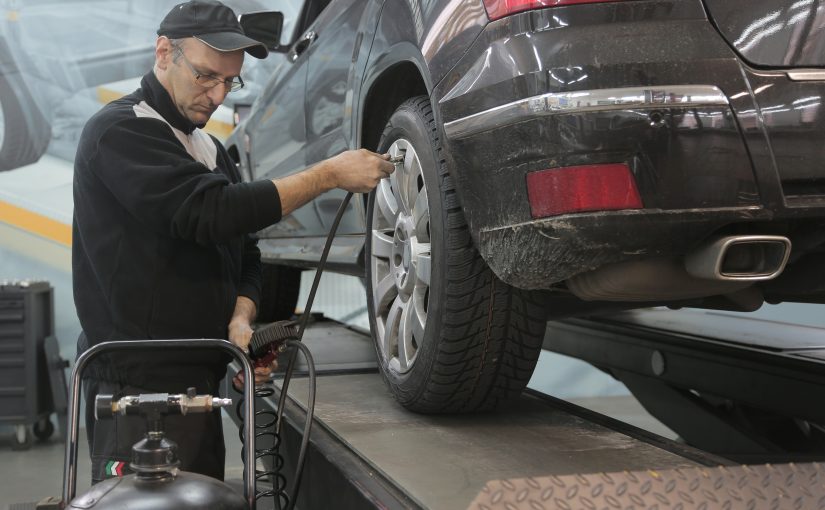Being a new car owner is exciting but at the same, it requires you to learn about your vehicle. There’s is a lot to learn so our advice is that you take your car education one part at a time. And the best place to begin? The tyres!
Keeping your car tyres in great condition is of utmost importance for your safety. So, here is a beginner’s guide to car tyres containing everything you need to know about them.
What is a contact patch?
The contact patch is the actual portion of the tyre that’s in contact with the road. It’s also called a footprint and commonly referred to when discussing pneumatic or pressurised tyres. Since a pneumatic tyre is flexible, it’s contact patch changes depending on several factors.
If the load on the tire is large, the contact patch is larger. On the other hand, the contact patch is smaller when the tyre pressure is larger. When stationary, a car’s contact patch is wider but when in motion, it tends to be narrower. It’s important to be aware of your car’s contact patch because it affects the ride quality and handling.
Tyres with a larger contact patch have a better grip or traction on the road while wider contact patch means more stability, especially when cornering. Meanwhile, a car with a long and narrow car patch will run smoothly and have predictable handling.
Most manufacturers spend millions of dollars in research to achieve the best contact patch. This will improve the performance of their tyres. If you just bought a vehicle, you need to know the contact patch of its tyres. This is so you’ll understand the car’s capabilities. At the same time, you’ll know the parts of the tyres that will easily wear.
When is a tyre worn out?
The best way to know if your car tyres are already worn out and need replacing is by looking at the tread depth. The tread is the outermost part of the tyre made from natural and synthetic rubber. It’s responsible for gripping the road surface and giving directional stability to the vehicle. The greater the tread depth of the tyres, the better grip they’ll have on the road.
Brand new cars usually have 8mm of tread depth. The minimum tread depth allowed in Australia is 1.5mm. Anything below it can increase the risk of accidents. The loss of grip can cause the tyres to slide, especially on wet roads. It can also take longer for your car to stop. This is when replacing your tyres is a must.
However, most experts recommend that you consider getting tyre replacement when the tread depth falls below 3mm. That’s because a tyre with less than 3mm tread depth will have a 40% increase in braking distance. For example, when braking, a car with 8mm tyre depth will come into a full stop. A vehicle with below 3mm on the other hand will still be running at 40kph.
Going on a road trip this winter? Read our helpful article: 5 Winter Road Trips Across Australia
What are sipes on tyres?
Sipes are the small zigzagging slots moulded or cut into the tread surface of a tyre. The sipes help increase the tyre’s grip on wet, icy, snowy, and muddy surfaces. They also aid in removing more water and reducing the noise level produced by the tyres.
When a tyre makes contact with the road surface, the sipes will open, making the tread block flex and increase in surface area. This gives the tyre more traction on the road surface, whether it’s dry, wet, or snowy.
Before, most car owners would cut their own sipe patterns into their tires. Nowadays, because of the technological advances in tyre manufacturing, computer-designed sipes are formed into the tread during production.

What is the required air pressure?
Your car’s tyres have manufacturer-prescribed air pressure level. It’s usually specified in BAR or PSI (Pound per Square Inch). You can find it in the vehicle handbook, on the driver’s door, or inside the fuel filler flap. Maintaining your tyres at this level will not only prolong their lifespan but also give you driving comfort, ease in handling, and stability to your car. It’s also advisable to check the tyre pressure every 14 days and before going on long journeys.
Whatever pressure is specified for your car, remember that this applies to a cold tyre. It will increase once the tyre heats up while driving but don’t make the mistake of reducing the pressure. If you do this, the tyre will be below the prescribed pressure level once it cools down. Driving below the minimum pressure will make your car unstable while running and cause irregular wear on the tyres.
Different types of tyres
There are three types of tyres: summer, winter, and all-season tyres. What comes with new cars are all-season tyres. Although they’ll do the job in all weather conditions, these tyres can’t provide the optimum performance during the summer or winter season.
So, it’s highly recommended to use the appropriate tyre depending on the season. When the temperature becomes warmer than 7 degrees Celcius, you should swap for summer tyres. They will provide better grip on dry and wet roads. Summer tyres will also give you a higher mileage performance during warm weather.
Use winter tires when the temperature reaches below 7 degrees. During this time, the roads will be wet, cold, and slippery. Only winter tyres can handle these conditions at an optimum level. You should also consider getting wider winter tyres. They will give you a better grip on compact snow, better steering precision, and shorter braking distances.
Size, load rating & speed rating
Other things you should know about tyres are the size, load rating, and speed rating. The tyre’s size is usually measured in millimetres, which refers to its width. Some of the tyre sizes available in Australia are 165mm, 185mm, and 205mm. Knowing the right size for your car is essential when switching from a summer tyre to winter tyre and vice-versa.
This information is also important when purchasing replacement tyres. That’s because your car’s tyres must always be of the same size, no matter what brand you choose. A mismatched tyre will greatly affect your car’s acceleration, steering, handling, and stability. It will also affect the accuracy of the speedometer. This can lead you to overspeeding and underestimating the length and time required to stop.
Load rating (load index) tells the maximum load a tyre can carry at a given time. A passenger car’s tyre usually has a load rating between 60 and 110, which is equal to 250 to 1060 kg load capacity. Multiply this by four and you’ll get the total load capacity of your car. Make sure not to overload your car or you’ll wear out the tyres faster. Overloading will also put a lot of strain on your car when accelerating and cost you more fuel.
Lastly, the speed rating indicates the maximum speed a tyre can run at maximum load. It’s expressed in kph (kilometres per hour) or mph (miles per hour) and represented by letters with “N” indicating the lowest speed and “Y” for the highest speed. The speed ratings were created so that the tyre speed capability will be matched with the car’s top speed.
Although most car tyres are capable of high speeds, manufacturers still recommend that you drive in your state’s legal speed limit. Also, if your tyres have different speed ratings, make sure to drive according to the tyre with the lowest speed capability.
The tyre size, load rating, and speed rating can all be seen in the owner’s manual, as well as on the tyre’s side markings.
How to read a tyre’s sidewall code?
If you know how to read a tyre’s sidewall markings, then you’ll have a good idea about its capabilities. Let’s have this code as an example: P165/65R13 90H.
P – The vehicle type the tyre was made for.
165 – The tyre’s width in millimetres
65 – The tyre’s height in proportion to the width. A 65 aspect ratio means the height is 65% of the width.
R – The type of tyre construction, where R means radial.
13 – The diameter of the rim in inches.
90H – The maximum load capacity and speed of the tyre. 90 means a max load of 600kg while H means a maximum speed of 210kph.
Aside from these specifications, tyres in Australia also include the manufacturer’s name or logo, serial number, mould number, factory code number, and country of origin.
Car Finance from Aussie
Whether you currently own a car or planning to buy one, this beginner’s guide will help maintain your car tyres and keep them in excellent condition for your safety.
Although we are not taking new applications at the present due to COVID-19, you can still call Aussie Car Loans at 1300 889 669 or send us an enquiry online for any questions about our finance. We are keeping tabs on the situation and will inform you once it’s safe to submit your application.




